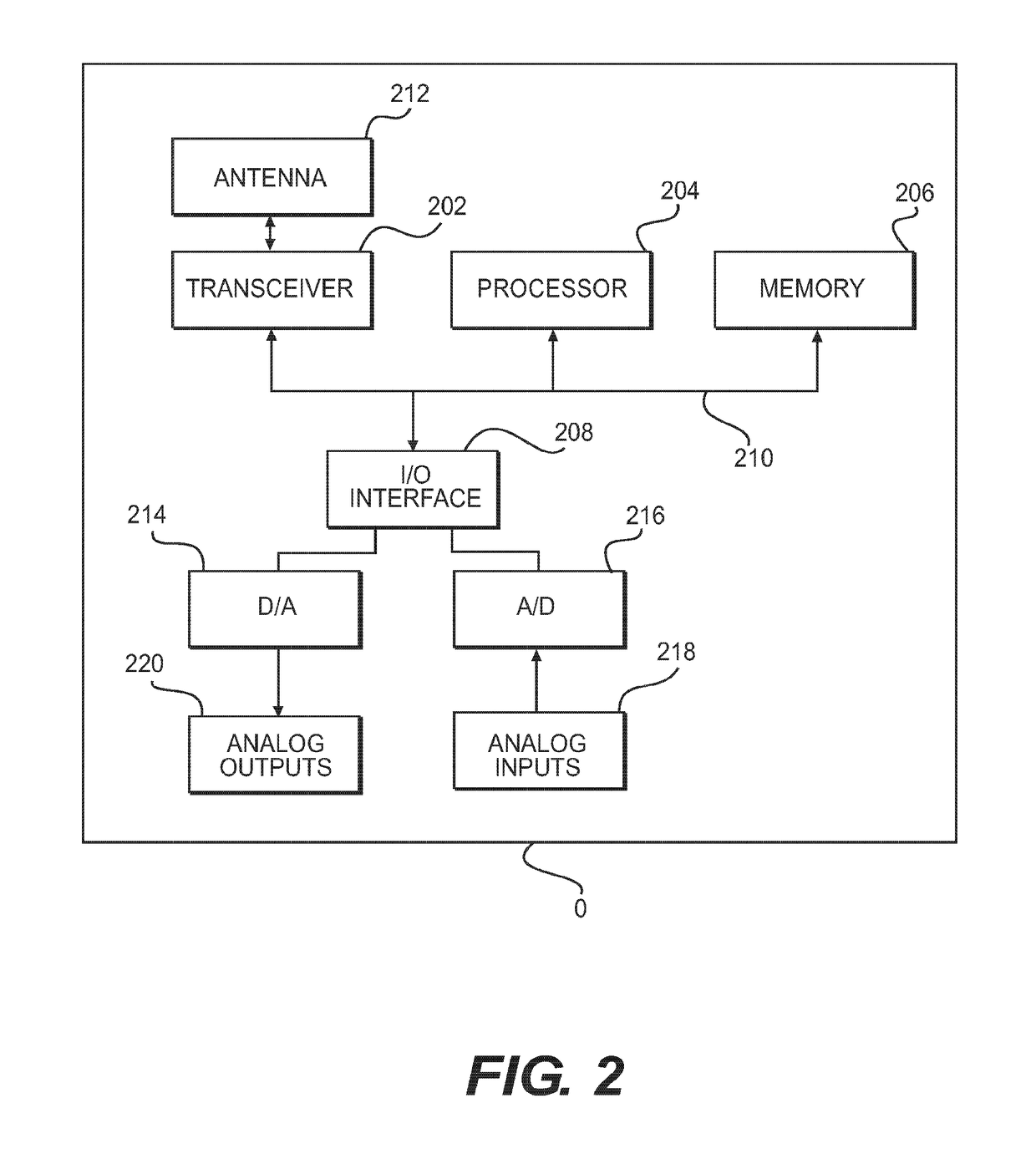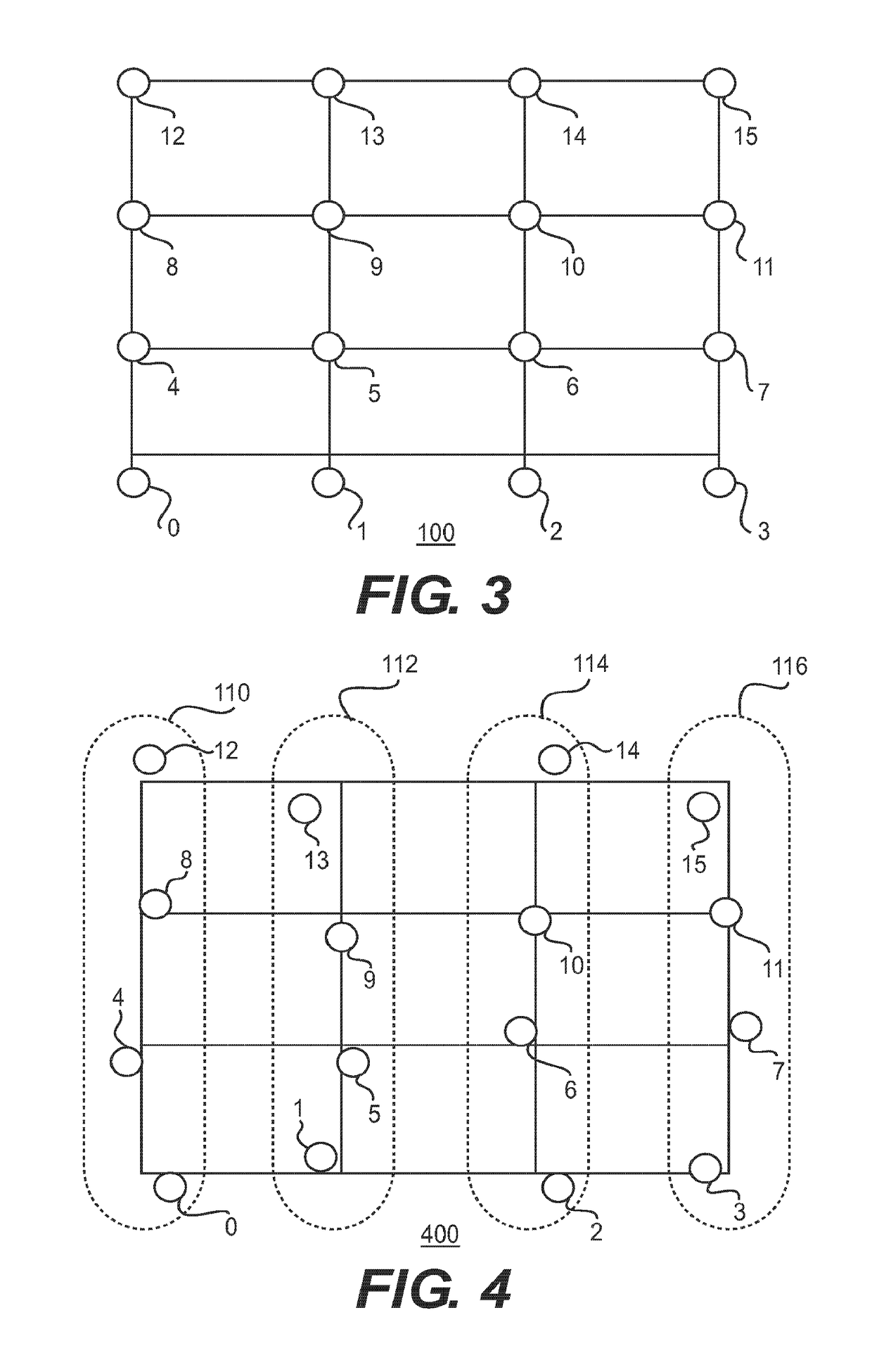ID-based routing protocol for wireless network with a grid topology
a wireless sensor network and routing protocol technology, applied in the direction of transmission, wireless communication, energy consumption reduction, etc., can solve the problem of limited power available for operating each node of the wireless sensor network
- Summary
- Abstract
- Description
- Claims
- Application Information
AI Technical Summary
Benefits of technology
Problems solved by technology
Method used
Image
Examples
Embodiment Construction
[0057]Referring now to the drawings, wherein like reference numerals designate identical or corresponding parts throughout the several views.
[0058]FIG. 1 shows a wireless network 100 including sixteen wireless nodes 0-15 arranged in a grid according to an embodiment of the disclosure. The grid includes four rows 102, 104, 106, 108 including a zeroth row 102, a first row 104, a second row 106 and a third row 108. The grid includes four columns 110, 112, 114, 116 including a zeroth column 110, a first column 112, a second column 114, and a third column 116. Alternatively, networks according to the present teachings can have an arbitrary number of rows greater than one and an arbitrary number of columns greater than one. As shown in FIG. 1 the zeroth row 102 is the lowermost row and the zeroth column is the leftmost column. Alternatively the rows can be numbered from top to bottom and alternatively the columns can be numbered from right to left.
[0059]The nodes 0-15 are numbered sequent...
PUM
 Login to View More
Login to View More Abstract
Description
Claims
Application Information
 Login to View More
Login to View More - R&D
- Intellectual Property
- Life Sciences
- Materials
- Tech Scout
- Unparalleled Data Quality
- Higher Quality Content
- 60% Fewer Hallucinations
Browse by: Latest US Patents, China's latest patents, Technical Efficacy Thesaurus, Application Domain, Technology Topic, Popular Technical Reports.
© 2025 PatSnap. All rights reserved.Legal|Privacy policy|Modern Slavery Act Transparency Statement|Sitemap|About US| Contact US: help@patsnap.com



